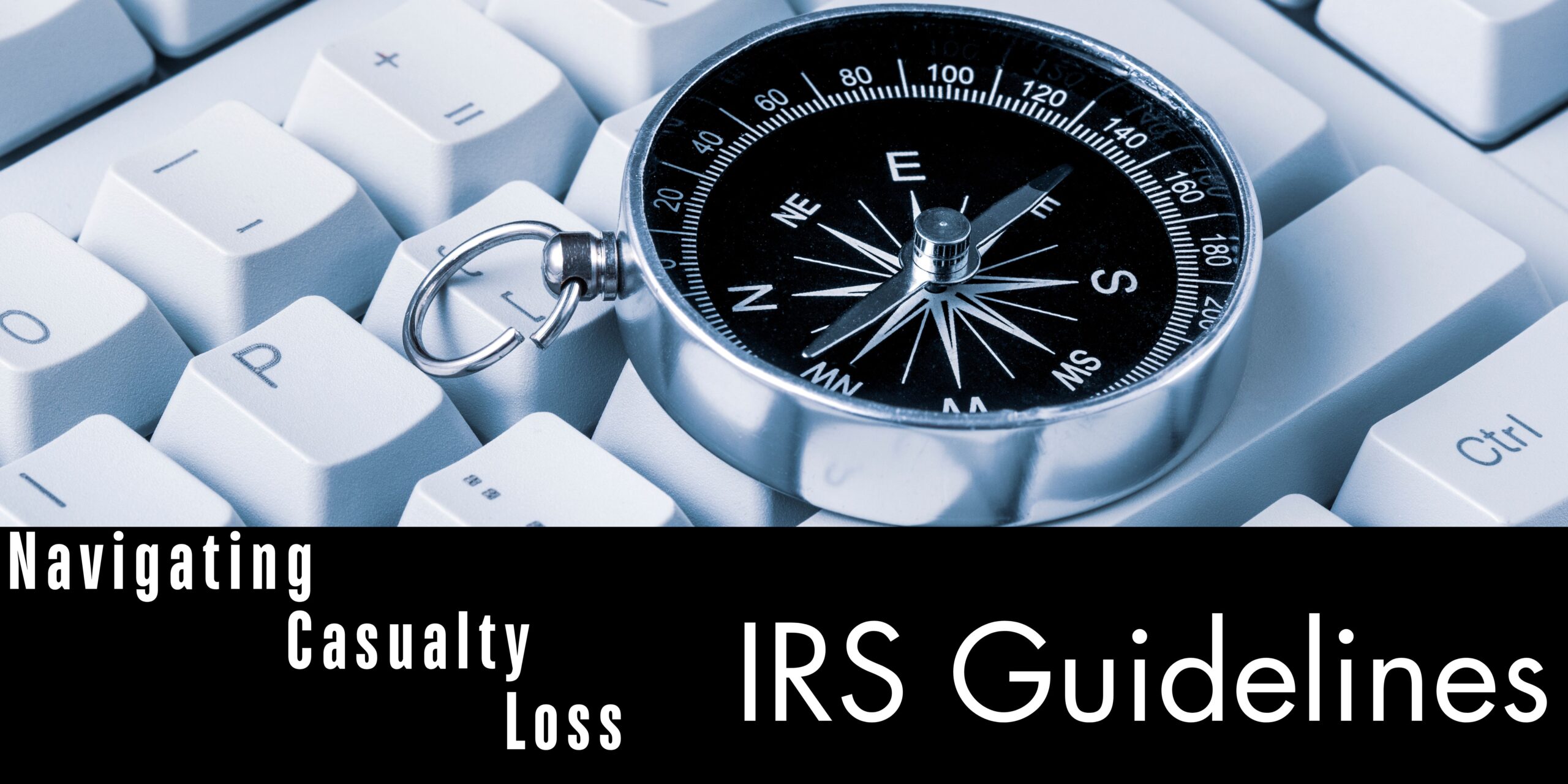An aspect of calculating a casualty loss is determining the decrease in the property’s FMV (fair market value). The IRS instructs taxpayers to calculate this decrease with an appraisal on the damaged property. However, the IRS does provide some safe harbor methods that individuals can use to determine the decrease.
For personal-use residential real property:
- Estimated repair cost method – The estimated repair cost safe harbor method allows you to figure the decrease in the FMV of your personal-use residential real property using the lesser of two repair estimates prepared by separate and independent licensed contractors. The estimates must detail the itemized costs to restore your property to its condition immediately before the casualty. The estimated repair cost safe harbor method is limited to casualty losses of $20,000 or less.
- De Minimis Method – The de minimis safe harbor method allows you to figure the decrease in the FMV of your personal-use residential real property based on a written good-faith estimate of the cost of repairs required to restore your property to its condition immediately before the casualty. You must keep documentation showing how you estimated the amount of your loss. The de minimis safe harbor method is available for casualty losses of $5,000 or less.
- Insurance Method – The insurance safe harbor method allows you to figure the decrease in the FMV of your personal-use residential real property based upon the estimated loss in reports prepared by your homeowners or flood insurance company. These reports must set forth the estimated loss you sustained from the damage to or the destruction of your property.
- Federally declared disaster method – contractor safe harbor – If the loss occurred in a disaster area and was due to a federally declared disaster, then you may use the contractor safe harbor method or the disaster loan appraisal method. Under the contractor safe harbor method, you may use the contract price for the repairs specified in a contract prepared by an independent and licensed contractor to determine the decrease in the FMV of your personal-use residential real property. This safe harbor method doesn’t apply unless you are subject to a binding contract signed by you and the contractor setting forth the itemized costs to restore your personal-use residential real property to its condition immediately before the casualty.
- Federally declared disaster method – disaster loan appraisal – Under the disaster loan appraisal safe harbor method, you may use an appraisal prepared to obtain a loan of federal funds or a loan guarantee from the federal government that identifies your estimated loss from a federally declared disaster to determine the decrease in the FMV of your personal-use residential real property.
Personal belongings:
- De Minimis Method – Under the de minimis method, you can make a good-faith estimate of the decrease in the FMV of your personal belongings. You must maintain records describing your affected personal belongings as well as your methodology for estimating your loss. This method is limited to losses of $5,000 or less.
- Replacement cost safe harbor method for federally declared disasters – The replacement cost safe harbor method for federally declared disasters allows you to determine the FMV of your personal belongings located in a disaster area immediately before a federally declared disaster to figure the amount of your casualty or theft loss. To use the replacement cost safe harbor method, you must first determine the current cost to replace your personal belonging with a new one and then reduce that amount by 10% for each year you have owned the personal belonging. If you choose to use the replacement cost safe harbor method, then you must use that method for all your personal belongings.
Business property is not eligible for these safe harbor methods. The following rules apply to business property:
Business property that is completely destroyed does not require a calculation of decrease in FMV. The taxpayer just needs the adjusted basis in the property, any salvage value, and any reimbursement or insurance proceeds received. The adjusted basis and salvage value should be available on the activity’s depreciation schedule.
For business property that is not completely destroyed, the decrease in FMV is determined in the same manner of as the personal use property. The difference between the property’s FMV immediately before and immediately after the casualty. The documentation the taxpayer should have for this is an appraisal done by a competent appraiser. Or they may use the cost of cleaning up or making the repairs as the decrease in FMV. Taxpayers need to meet the following conditions to use this method:
- The repairs are actually made
- The repairs are necessary to bring the property back to its condition before the casualty
- The amount spent for repairs isn’t excessive
- The repairs take care of the damage only
- The value of the property after the repairs isn’t, due to the repairs, more than the value of the property before the casualty
Please contact your tax advisor for more information or if you have any questions.



